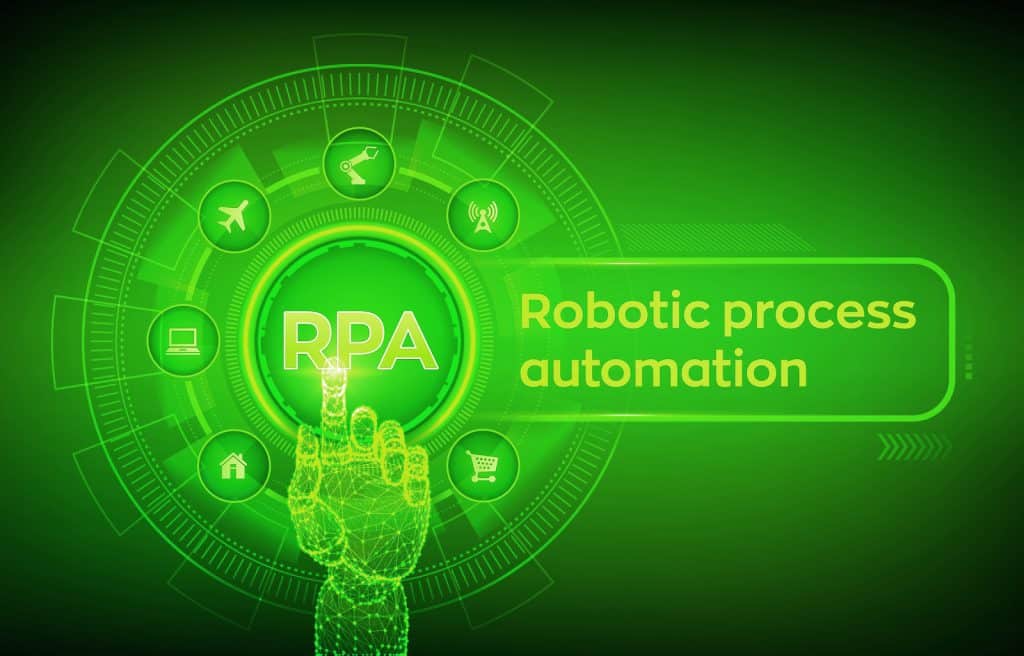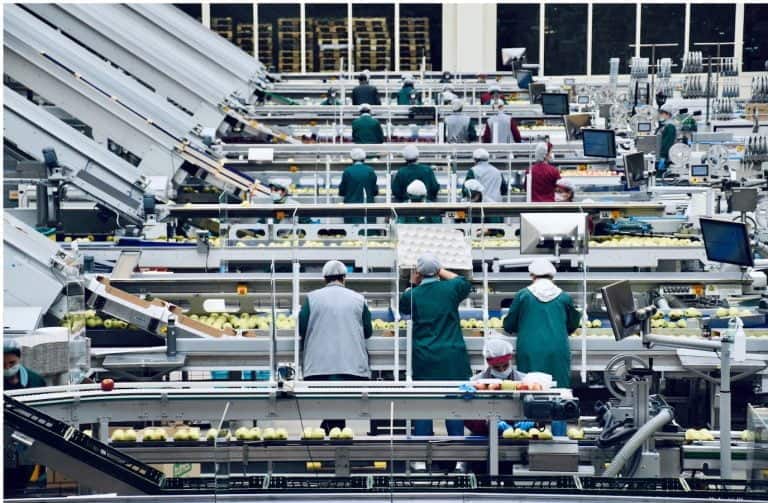In part 1, we learned about robotic process automation (RPA) discussed the benefits and proved some real examples of what can be achieved with RPA. In this second part, the focus is on the job opportunities RPA is creating and the training and certification needed to succeed in this growing field.
Table of Contents
ToggleRobotic Process Automation Jobs
As with the rise of all automation technology, the anticipated growth of RPA leaves many concerned that it will lead to the eradication of many jobs currently performed by humans. A recent article on SimpliLearn cites figures claiming RPA will threaten approximately 9% of the global workforce – or about 230 million jobs – by 2030. However, the World Economic Forum (WEF) draws attention to the fact that while many of today’s jobs will be lost to automation, many more new ones will be created. By 2022, though 75 million tedious, manual roles will be automated, 133 million new jobs will emerge – a net positive. And many of those new jobs will indeed be in the field of robotic process automation.
The demand for RPA jobs is already accelerating. Between 2016 and 2018, the volume of RPA-related jobs grew 15 times, according to data from Technojobs. What’s more, ISG predicts a 100% growth in advanced usage of automation in the enterprise, further fueling the demand for specialist RPA skills. As such, the robotic process automation job market is expected to expand even further over the coming years.

(Image source: automationanywhere.com)
Many types of jobs in RPA are and will become available, including solutions engineer, developer, senior developer, business analyst, internal auditor, process manager, and consultant. These jobs pay well – according to Indeed, the average salary for jobs relating to robotic process automation in the US is almost 30% higher than salaries for general programmers, and two to three times higher than entry-level jobs for non-technical workers.
Data from SimplyHired.com (at time of writing) indicates that the average RPA salary is $81,034 – rising to $120,095 in the top 25%, and $171,120 in the top 10%.

(Image source: simplyhired.com)
Robotic Process Automation Training Certification and Training Resources
As a result of the growth in enterprise usage, demand for people with robotic process automation skills is only set to rise over the coming years. Most companies will want to see that candidates for these roles have acquired training, with most preferring those who have earned certifications in RPA.
The good news is that many high-quality certification and training programs are emerging to help both existing IT workers and those interested in pursuing a career in robotic process automation. These enable workers to get up to speed on the latest RPA tools and practices so that they can take on enterprise automation. Some resources to consider include the following.
The RPA Academy
The RPA Academy offers a range of onsite and online training courses – for both individuals and organizations – that teach how to use UiPath, Blue Prism, and Automation Anywhere RPA software to their full advantage. UiPath, Blue Prism, and Automation Anywhere are all leading providers in the RPA space, and The RPA Academy is an accredited training partner of each. Courses can be accessed either via email, live online, onsite at RPA Academy locations (which are taken across the globe), or onsite at your own organization.
Udemy
Udemy is one of the world’s top online learning platforms and includes an extensive range of RPA training courses. The Robotic Process Automation – RPA Overview course is a great introductory program, providing a clear overview of RPA and preparing you for further study. The RPA Fundamentals + Build a Robot course will take you a step further – providing you with hands-on technology experience building a simple software robot and giving you a basic five-step plan for piloting and implementing RPA in the enterprise. Following this, the UiPath Level 1 and Level 2 courses will help you get to grips with the UiPath platform, while the Crisper Learning for Robotics Process Automation course also covers UiPath through hands-on exercises and video content with interactive elements. A full list of Udemy RPA courses can be found here.
MindMajix
Providing options for self-paced learning, instructor-led training, and corporate training, the MindMajix RPA Training courses focus on the fundamentals of automation – especially as it applies to development and design. MindMajix’s RPA training is designed to teach individuals how to automate multiple business tasks that are tedious and time-consuming. It covers all essential concepts, including RPA bots, text automation, and image automation, as well as how to use various tools, including UiPath, Automation Anywhere, and Blue Prism.
Multisoft Virtual Academy
Educating yourself around your usual work commitments is, by necessity, usually an evening and weekend endeavor. Multisoft Virtual Academy’s Robotic Process Automation Online Training course takes this into consideration, running every Saturday and Sunday evening for a month to provide a full 30 hours of live, instructor-led virtual classes. The course helps IT professionals gain a comprehensive understanding of the fundamentals of automation, error management, case management, inputs and outputs, Blue Prism’s RPA platform, and other RPA tools.
Automation Academy
Created by robotic process automation developer WorkFusion, the Automation Academy offers both Community Courses – which cover RPA basics – and Partner Courses, which are targeted more towards people with existing technical expertise. Of note is the RPA Developer course, which offers advanced robotic process automation training focused on developing tasks for software robots that are rule-based, repetitive, and transactional.
Final Thoughts
The use of robotic process automation is on the rise. According to Deloitte’s 2018 Global RPA Survey – its most recent release – 53% of organizations have already started implementing RPA, with the number expected to rise to 72% by 2020. The report suggests that if the current rate continues, we could be looking at near-universal adoption within the next five years.

(Image source: deloitte.com)
Even so, for now, RPA is still in its relative infancy. The same report found that despite aggressive adoption rates, only 30% of organizations have built a proof of value RPA deployment with one to five bots in operation, only 12% have six to ten software robots, 8% have eleven to 50, and a mere 3% have 50 or more.
Consulting firm Protiviti’s 2019 global RPA survey Taking RPA to the Next Level drew similar conclusions. It found that while, on average, companies are investing a substantial $5 million in robotic process automation in the current fiscal year. 40% are struggling to prioritize potential RPA initiatives. 32% are having trouble developing a strong business case for the technology’s use, and 30% are finding it challenging to decide on the best applications for the technology.

(Image source: protiviti.com)
What this all indicates is that even though organizations recognize the huge value of robotic process automation – as demonstrated by their financial investments – they’re still figuring out how best to take advantage of the technology and put it to good use. To help companies improve their RPA implementation plans, Protiviti highlights the lessons already learned by those that are most advanced in their use of RPA:
- Start with processes that are simple to automate
- Make processes as efficient as possible before automating them
- Ensure you are using the right tools for the process
- Consider the scalability of the application and whether it can support advanced technologies like AI as they become available
- Assess and address any cybersecurity and data privacy risks associated with the planned RPA application upfront
- Plan and budget for ongoing maintenance
- Track and analyze the cost-effectiveness of each RPA application
The robots are ready to automate your processes – but you need to be ready for the robots before you start implementing them. When administered correctly, robotic process automation can generate operational and strategic benefits and deliver on the bottom line. But successful RPA implementation also requires a sound business case supported by an adequate budget and ongoing monitoring of performance and results if the technology is to deliver the expected value.
RPA skills will also be essential to realizing the full potential of RPA applications. Protiviti found that, overall, about half of organizations around the world are developing RPA talent internally. RPA leaders (i.e. companies Protiviti has identified as being already ahead of the RPA curve) are more aggressive with this approach, with almost three-quarters delivering in-house RPA training, something that Protiviti stresses will be crucial to advancing RPA projects.
As Gurjeet Singh, Co-Founder and Chief AI Officer at Ayasdi, puts it: “Many executives and other RPA experts don’t believe a large number of jobs will be eliminated due to adoption of RPA. But that doesn’t leave companies off the hook for continually providing new skills to their workforces. Retraining is critical, and companies have to pay attention to it. Organizations have to provide continuing education for their employees because the world is changing. Businesses must invest in training to keep employees relevant and up to date.”
To do so, companies can either develop internal training programs or utilize or partner with RPA training organizations such as those highlighted above (Udemy, The RPA Academy, etc.). Individuals should also take advantage of the courses offered to get ahead of the game, as robotic process automation is most certainly coming – but fortune will only favor the prepared at both the individual and organizational level.
Look out for our next blog, where we will be looking at the top 5 robotic process automation solutions to deploy at your enterprise.
Is RPA a good career?
A recent article on SimpliLearn cites figures claiming RPA will threaten approximately 9% of the global workforce – or about 230 million jobs – by 2030. However, the World Economic Forum (WEF) draws attention to the fact that while many of today’s jobs will be lost to automation, many more new ones will be created. By 2022, though 75 million tedious, manual roles will be automated, 133 million new jobs will emerge – a net positive. And many of those new jobs will indeed be in the field of robotic process automation.The demand for RPA jobs is already accelerating. Between 2016 and 2018, the volume of RPA-related jobs grew 15 times, according to data from Technojobs. What’s more, ISG predicts a 100% growth in advanced usage of automation in the enterprise, further fueling the demand for specialist RPA skills. As such, the robotic process automation job market is expected to expand even further over the coming years.






